Magnetism
This page will not provide you with a full explanation as to what magnetism is. But it will provide you with very significant new information about magnetism that will explain some crucial basic information about magnetism which is still new. You will get to learn some things about magnetism in a way that it fits within the infinity theory, yet there is still more to be learned about magnetism then what is written on this page.
Vortices have a core, or a periphery, or both. All vortices below the eighth dimension level have a core. At the eighth dimension level the core continues outside the vortex. There are a few things about this that are uncertain. First uncertainty is whether the vortices that come after this dimension level should be considered to be vortices that do not have a core, or that these vortices do have a core but that the core is now external, instead of internal. The core line that progresses away the revolute, should it be considered still a part of the revolute? Or a separate element?
Second question is whether the core progresses as a line, or if it opens up and becomes a larger movement. The core of a vortex is electromagnetic, so it could be that either an electric or a magnetic field forms along the core line. The external core line could be a starting point of a magnetic field.
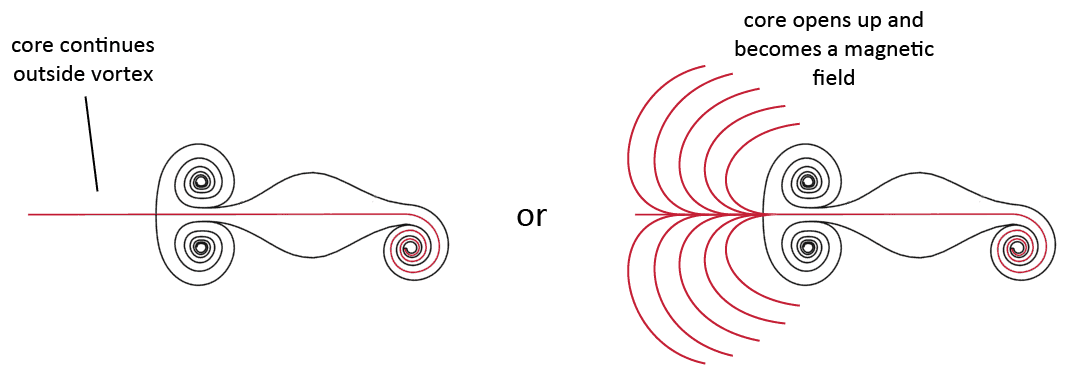
The reason that I think that the core line might be where a magnetic field forms is a connection that I found linking magnetic field lines with the transformation sequence of the first half-cycle. Finding this link requires careful observation and letting go of general assumptions. This will be demonstrated in the next example. This example involves the magnetic field lines around a bar magnet. We've all seen how these magnetic fields look like. You can make them visible by placing the bar magnet on a flat surface and spraying iron fillings around the magnet. Most of us remember this from school or seen these field lines somewhere in illustrations. What I noticed is that when people make a drawing of these field lines, they do not do draw what they see in front of them, but they draw what they believe is correct. You can find hundreds of these magnetic field line drawing by just searching for them on Google, yet you will never find a single one that matches reality.
 |
 |
 |
_UnderCCBYSA2.5.png) |
_UnderCCBYSA3.0.png) |
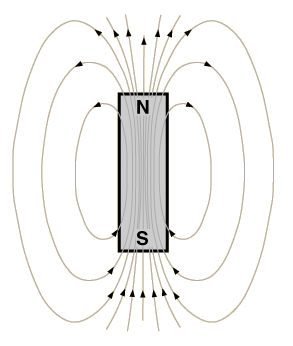 |
|
Image by Mirek2 (Wikimedia), under CC BY-SA 2.5 licence |
Image by Geek3 (Wikimedia), under CC BY-SA 3.0 license |
Image by P.Sumanth Naik, under CC BY-SA 3.0 license |
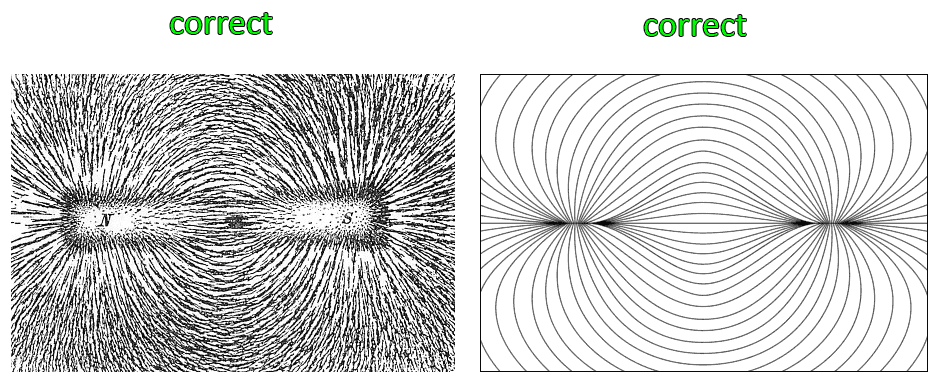
Left image by Newton Henry Black
I am not sure if the field lines should start and end at two short line sections, or as two points instead. In the picture on the right, I drew two short line sections.
If you look carefully at the picture of the magnetic field lines made by the iron fillings, then you see how the central part of the field looks like a cradle, a tunnel vortex of the first half-cycle. This part is ignored in all of the standard drawings of an electromagnetic field that one can find. Some drawings illustrate the central part incorrectly, others completely omit the central part.
The reason for why I think the central part of a magnetic field is shaped like a cradle is because the cradle is the predecessor of the magnetic field, combined with the pilaster. The magnetic field is a vortex, and that vortex is a merging of the vortex type of the cradle and the vortex type of the pilaster, forming a closed loop. Thus the magnetic field is a tunnel-outer bridge combination. To explain this you need to think about how two revolutes are connected with a pilaster and a cradle. At all the vortices on or below the dimension level of the revolute (3.75D to 4.25D), a tunnel or outer bridge can connect between two spirals without any other vortices in the sequence intersecting those vortices. But if a scroll ring forms within a revolute, then that scroll ring can not connect with another scroll ring at the opposite side of the mirror plane because it would then intersect the other vortices.
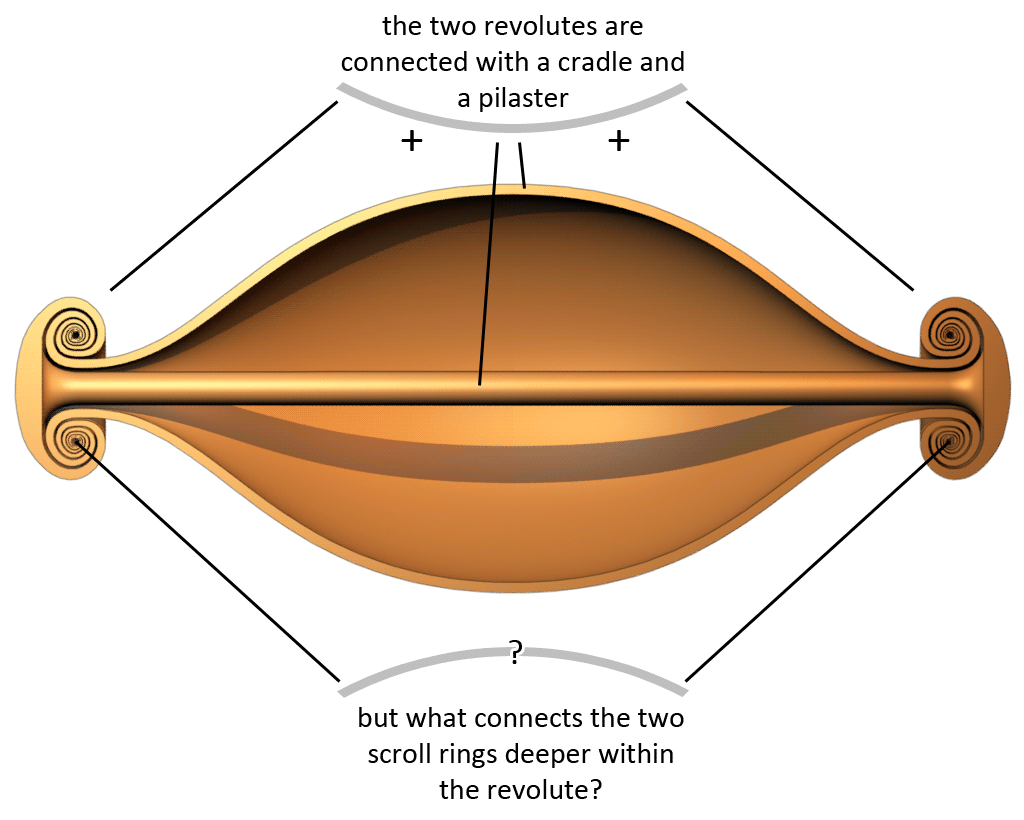
So one would think that tunnels or outer bridges can not form above the eighth dimension level in the same way as they do below that level. But here it are the magnetic fields that fill in the gab in this puzzle. We known that the cradle morphs into a bubble. When that happens the two spirals on opposite sides do no longer connect, because a bubble is a vortex that does not physically connect to two spirals. A bubble is vortex that floats freely without any direct physical connections to any other vortex in the sequence. Yet it could very well be that the connections to the spirals are still there, yet now in the form of the two spirals + a magnetic field + the bubble. The cradle + pilaster have morphed into a bubble + magnetic field.
The connection between magnetic field and bubbles is shown by the fact that bubbles react to an electromagnetic field. Which is nicely illustrated in the video below.
All this is possible because the magnetic field is intangible, it goes through solids, it can go through matter. It is very likely that the cradle is the last tunnel in the sequence that forms a full connective-bridge as visible matter, because it is shaped like part of a magnetic field. It could be that the spirals, magnetic field and bubble are independent of each other. They can exist as a connection, but they can all three also exist as stand-alone vortices. What happened when the cradle and pilaster morphed is that the sequence has split. Splitting is a characteristic of the higher dimensions.
Position of the Vortices
Until now we did not know what the exact position and size of the bubble is in the transformation sequence. But finding this relation with magnetic fields enables us to look clues in new directions. We know that a bubble is round, so we need to look for a round shape in the field lines of a magnetic field. If we can find a round shape, we know the position of the bubble within that field. This is what is illustrated in the image below.
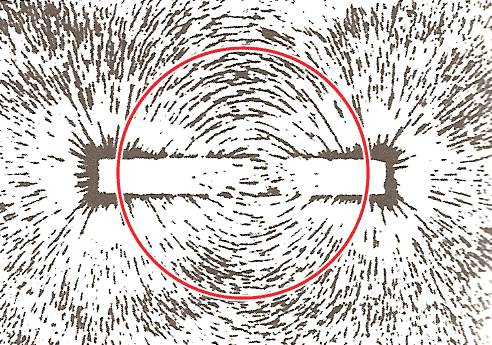
Image by Julio Nather. Image was converted to GIF anim and red
circle was added
Now, if we know the position of the cradle and bubble, we also know how the magnetic field is oriented in relation to these vortices, which is shown in the image below. The bubble must be a vortex that encapsulates the cradle, because of the shape of a magnetic field and the position of the ellipsoidal shape within that field as opposed to the shape of the cradle within that field.
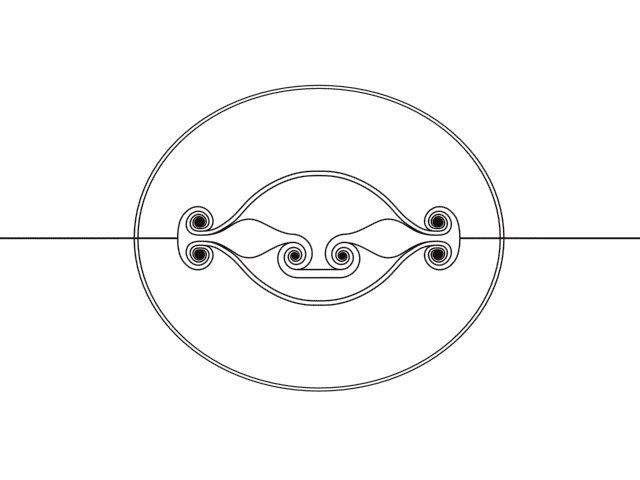
So from this we can conclude that it is likely that the revolute, the aureole belt, the scroll ring, and the omega ladder, are all vortices that do have a core, but that the core is external. The core runs outside of the body of the vortex, and because the core runs outside the body a bridge or tunnel can form at that external core, as an external starting point of a vortex that connects other vortices at the other side of the mirror plane. The bridge and tunnel that forms are part of an electromagnetic field, that is intangible, just as the core lines are.
This explains why a magnetic field forms between a negative charge and a positive charge. A magnetic field connects two spirals, one is left-turning and the other is right-turning. One spiral has a negative charge, the other spiral has a positive charge.
POSITIVE CHARGE = A FORCE INDUCED BY A RIGHT-TURNING SPIRAL
NEGATIVE CHARGE = A FORCE INDUCED BY A LEFT-TURNING SPIRAL
On the page about the state of equilibrium there's a good example that demonstrates that this should be correct (the floating water bridge, one side of the bridge has a negative charge the other side has a positive charge). If it is the left and right turning vortex that belongs to a negative or positive charge or the other way around I can not determine. I just assigned left to negative and right to positive. We might need to change that later, time will tell which convention is better.
But if this magnetic field is indeed a vortex, then the question arises as to why this vortex is invisible and intangible. There is a possible explanation for this. And this has to do with the possibility that the individual movements (meridians) in a magnetic field are parallel to each other, and not braided. For a vortex to be able to push or pull on matter, meridians need to form a weaving pattern. If all the movements point in the same direction then the vortex can not push or pull on matter. The disc and spire are two vortices that suggest that this is so. Both have no weaving pattern and both can not push or pull on matter if they are unmorphed.
Does a magnetic field contain a weaving pattern? The first hint that tells us if so is when we look at the pattern made by the iron fillings around a bar magnet. It looks like there's no weaving pattern in a magnetic field, the lines are just parallel. We can not be sure by looking at the iron fillings because they only show a 2D slice of the entire vortex, and only in limited detail. For this we need to look for clues in another direction, this time we find clues in plant and animal life.
Plant and Animal Life
Magnetic field lines are invisible to the naked eye, so therefore we can not see a magnetic field. However, we do see those exact same shapes in visible organic objects. If you cut an apple in half you can see three things that match the shape of a magnetic field. The outer part of the apple has the shape of the outer magnetic field lines. And the inner part of the apple has the shape of the inner magnetic field lines, which is thus shaped like a cradle. And the third detail that matches the magnetic field is the stem of the apple, which grows along the central axis of the magnetic field.
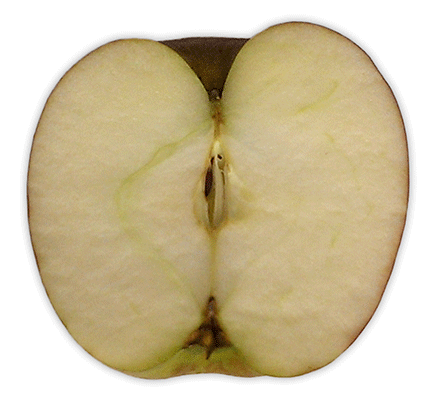
Now, with most, yet not all apples, when you look at the outer skin of the apple, you can see the direction of movement in the texture of the skin. The movements are parallel, there is no zigzag or weaving pattern. For this you need to go buy some apples and look closely at the outer skin. Find the ones that show a directional pattern. Either you see lines in one direction, or with some apples no lines at all. In other similar shaped fruits you can spot these lines of movement as well, in some better than others. A good one is pumpkins. Pumpkins give away a very clear picture as to how the direction of the movements are within this vortex. You can easily count the lines of movement, which in the examples that I found were all 10.
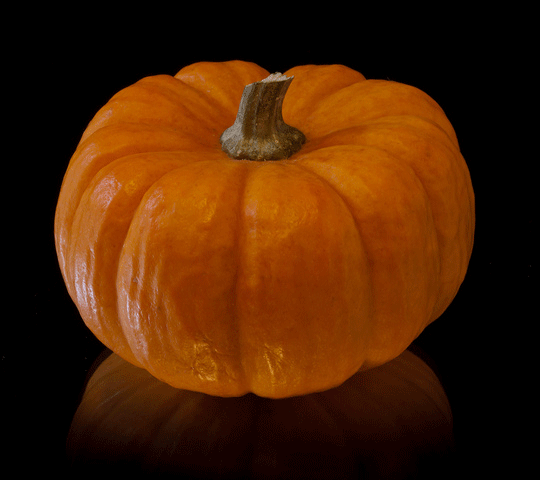 Image by William Warby, under CC BY 2.0 license. Image converted to GIF, cropped and lines were added |
.jpg) Image by L.Madin, Woods Hole Oceanographic Inst (WHOI) |
The shape of bar magnetic fields can not just be spotted in plant life, but in animal life as well. On the right is a picture of a comb jelly. Notice that here too, you can spot lines of movement in its internal structure. The direction of the movements is the same as in the fruits and pumpkins.
These visual examples provide clues for us for understanding the vortex movement of a magnetic field. These are clues provided to us by mother nature. Exactly why organisms are shaped like vortices is not completely sure, but a likely explanation to this is given on the page about biological life.
MAGNETIC FIELD = A TUNNEL-OUTER BRIDGE COMBINATION ABOVE THE EIGHTH DIMENSION LEVEL WHOSE MERIDIANS ARE NOT BRAIDED, AND THAT CONNECTS TWO SPIRALS THAT CAN NOT BE CONNECTED BY A PHYSICAL VORTEX
So now I've told you that it is a likely conclusion that a magnetic field is a tunnel-outer bridge combination. This tells us it might be better to classify this vortex as a new type. Gravity might also be a tunnel-outer bridge combination, yet at a different position, in a different location of the sequence (negative dimensional instead of positive dimensional). It is unknown what class or type that vortex is but this new insight about magnetic fields might bring us one step closer to finding the correct answer. Both magnetism and gravity show some of the same characteristics.
Dilation of Ladders
If you think for a moment, you might have thought of something that the last definition does not explain. The third half-cycle is the location of the transformation sequence where we can find the metals. The disks are the states of equilibrium for metals. And we know that magnetism acts on metallic objects. There should be some kind of a connection between magnetic fields and the third half-cycle.
It could be that the magnetic fields that appear in the first half-cycle are of a vortex type that is also present in the third half-cycle. Yet I'm not sure about this. There is one clue that suggests that these magnetic fields might be there and that clue is found by observing the dilation of ladders in the first half-cycle. Dilation, or dilative morphing, is one of two types of morphing. The other type of morphing is called sequential morphing which is when a vortex changes into a vortex that is two dimension levels higher in the sequence. Dilative morphing is a type of morphing where a vortex changes into a vortex that lies exactly one cycle higher than the first vortex. The vortex makes a movement from one cycle to the next.
When a spiral dilates, it changes into a disk or a bell vortex. But what happens when a ladder dilates? Such movement can be seen in the image below. The photo shows several stages of a flow in a closed cylindrical container completely full of a glycerin-water mixture induced by rotating one of the end walls. The vortex looks like an amplicone with a bulb and a pylon and a revolute connected as one vortex. But the vortices are dilated. The spirals look like hollow shells instead of containing spiral arms that rotate inward (in this case only the revolute, the bulb never has spiral arms). In two of these images, the pylon or amplicone appears to expand by changing into a layered structure, made of thin sheets. I've highlighted those two stages in a red color.
_FromAGalleryOfFluidMotion_Edited.jpg)
Image by M.P.Escudier, from Album of Fluid Motion by Milton van Dyke.
Image was edited with red color.
It looks in those images as if the ladder is taking in the form of the magnetic field. If the vortex keeps dilating the layers will change into a progressively higher number of layers which become thinner until it changes into vapor. The vortex then no longer has a visible shape. These layers that form during dilation are all oriented parallel to one another, just like the individual lines of a magnetic field also run parallel to one another. The revolute also appears to almost form a disk.
Yet in other images you can see that the bulb and revolute have clearly dilated into a vessel and revodome, yet the ladder does not dilate and expand into a layered structure but appears to thin out and disappear. I suspect that the ladders dilate into vapor, and outer bridges also dilate into vapor when dilating alone, but that the outer bridges combined with a tunnel dilate into a magnetic field. This is revealed by how the stem of a mushroom cloud almost takes on the shape of a magnetic field, yet not quite, at the end of the morph process it has changed into vapor.
The same alteration in appearance can sometimes be seen in large explosions. Most explosions do not form a pylon that is dilated, but a few explosions do (most likely related to weather conditions during time of detonation). Below you can see a photograph of Operation Ivy Mike, a hydrogen bomb testing performed by the United States. This one shows a pylon or pilaster that is clearly dilated, structured into thin white sheets (the pylon or pilaster is the stem of the mushroom). The thin sheets of this pylon have the same orientation as the cradle, which looks like the same kind of thin white sheet when it forms under a mushroom cloud, except in the case of a cradle it is only one sheet that forms, not multiple.
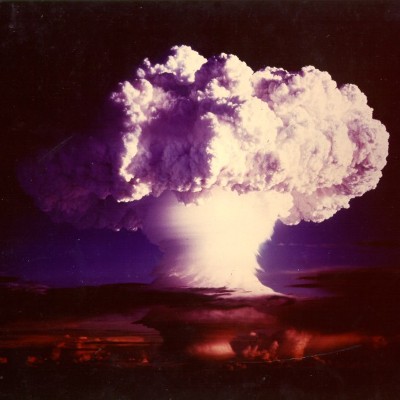 Image by U.S. Department of Energy |
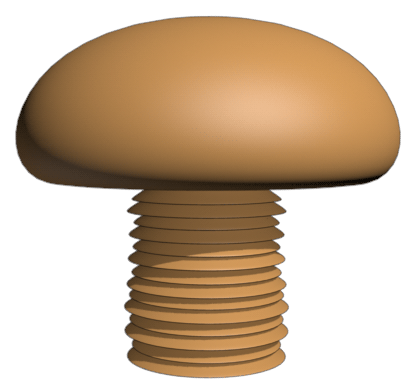 |
The stem of the mushroom has formed a vapor cloud. Eventually it will dilate completely towards the second cycle (third half-cycle) and this cloud will expand and distribute evenly over space. You can also see that the revolute has flattened out a bit and partly morphed into a disk.
I do not know if the vapor forms a vortex. I still haven't seen any identifiable shape in the third half-cycle that is the result of dilation of a ladder into vapor. It appears that end result is a gas that is evenly distributed over space. But I do think that these vapors co-exist or even connect with the disks, because they have both morphed in the same direction. To complete the puzzle, the bells or disks should also connect with the magnetic fields.
WHEN A SPIRAL DILATES, IT CHANGES INTO A DISK OR BELL VORTEX
WHEN A LADDER OR OUTER BRIDGE DILATES, IT CHANGES INTO VAPOR
WHEN A TUNNEL COMBINED WITH AN OUTER BRIDGE DILATES, IT CHANGES INTO A MAGNETIC FIELD
VAPORS AND MAGNETIC FIELDS CONNECT DISKS AND BELL VORTICES IN THE THIRD HALF-CYCLE
Bells do not have two ends that have a different dimensionality, and for magnetic fields this appears to be the same. Bells loop on one continuous location in the sequence. Yet the spirals and ladders that they originate from, before dilation, those vortices do have two ends with unequal dimensionality, one dimension level apart. So it appears that dilation leads to a change in vortex type.
So I haven't told you all you need to know about magnetism. But I have told you something new. And anything new is a step forward. This page is still short at the moment, but I got a strong feeling that this page will grow rapidly in the coming months. There is still a lot to be discovered about magnetism and its role within the transformation sequence.
| All content on this site that is authored by Peter.A.Venis is licensed under the Creative Commons CC BY 4.0 license, unless otherwise mentioned. Most pages on this website also include material from other authors, under different licenses. Both the author's names and the licenses are mentioned in the file names whenever this information is known and can be provided. The presence of work from other authors on this website does not necessarily imply that those authors endorse the contents of this website. |
| A word that is often used on this website is the word 'vortex'. Many sources describe a vortex as a movement in a fluid that has a rotational flow. Yet many of the vortices that I describe on this website do not show a visible rotational flow. I took the liberty of using the word vortex for describing a phenomenon that had not been understood before, one that links together rotational and non-rotational movements. Even a movement in a straight line can in some cases be categorized as a vortex, if it is known that that movement is created by certain identical conditions. So keep in mind that the word 'vortex', within the context of the infinity-theory, has not the exact same meaning as other sources describe. |



